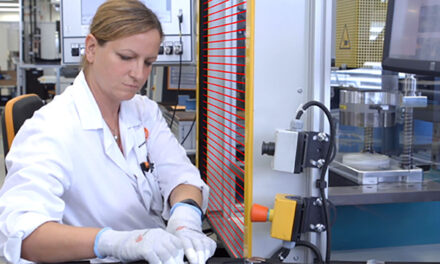In 2017, a report by the Health and Safety Executive (HSE) revealed over 60,000 non-fatal injuries happened to workers in the UK’s manufacturing sector. With automation and Industrial Internet of Things (IIoT) technologies becoming more prevalent, this figure is expected to decrease dramatically as the number of potential risks to plant workers falls.
Here, position and motion specialist Emolice, explains how motion control components can improve both worker and functional safety.
Safety of both workers and a system or piece of equipment remain top of the agenda for many plant engineers, particularly for those working with new technologies that they have minimal experience of. While for many years safety resided with single components, such as light curtains and relays, automation and the creation of the ‘smart factory’ has enabled the evolution of plant safety to a system-level process. One technology that is doing this in particular is the encoder.
Found in equipment across an array of industries, encoders are sensing devices that convert motion to an electrical signal that can be read by a motion control system, such as programmable logic computers (PLC). The encoder transmits a feedback signal, which allows the operator to determine the speed, direction and position of the chosen application. The control device in the motion control system can then use this information to send a command for a particular function, including the motion of a motor shaft, pulley or even robot arm.
Encoders use a variety of technologies, including magnetic, mechanical, optical and resistive to create signals. Optical sensing is the most commonly used and allows an encoder to provide feedback to the control system following an interruption to a specific light source. Magnetic technology however, is catching up due to significant technological advances, allowing magnetic encoders to match the performance of optical counterparts, whilst being more durable and robust.
Enhancing functional safety
As an exclusive distributor of POSITAL FRABA’s range of rotary and linear encoders, Emolice provides equipment for a variety of applications, from factory automation to control systems for mobile machines. All of these applications require precise, real-time information about the physical location of mechanical equipment.
High shock and vibration resistance are key functions when operating in demanding manufacturing and industrial environments, but particularly for machine builders who develop equipment that go into these environments, including food and beverage, pharmaceutical and oil and gas. Emolice’s absolute encoders maintain position information during production downtime, when power is lost for example, meaning when the system is back online the process can continue often without having to be reset. In addition, some encoders support the PROFIsafe protocol, which is used for
critical applications, such as industrial robots or material handling, where the loss of control could result in serious hazard to both employees and equipment. Capabilities of this protocol include prioritised start-up, media redundancy and firmware updates, should they be required.
Across the globe there are various rules and regulations surrounding safety in the workplace. In Europe, the Machinery Directive 2006/42/EC requires that machinery is designed and built so it can be used safely. As regulations become more stringent, more and more manufacturers are turning to retrofitting old equipment with additional safety measures, such as encoders to improve overall functional safety.
While risks in the manufacturing plant may decline as automation becomes more popular, safety should always remain a high priority for plant managers. Technologies, including encoders, will only ease the safety burden and aid in meeting required safety regulations.






